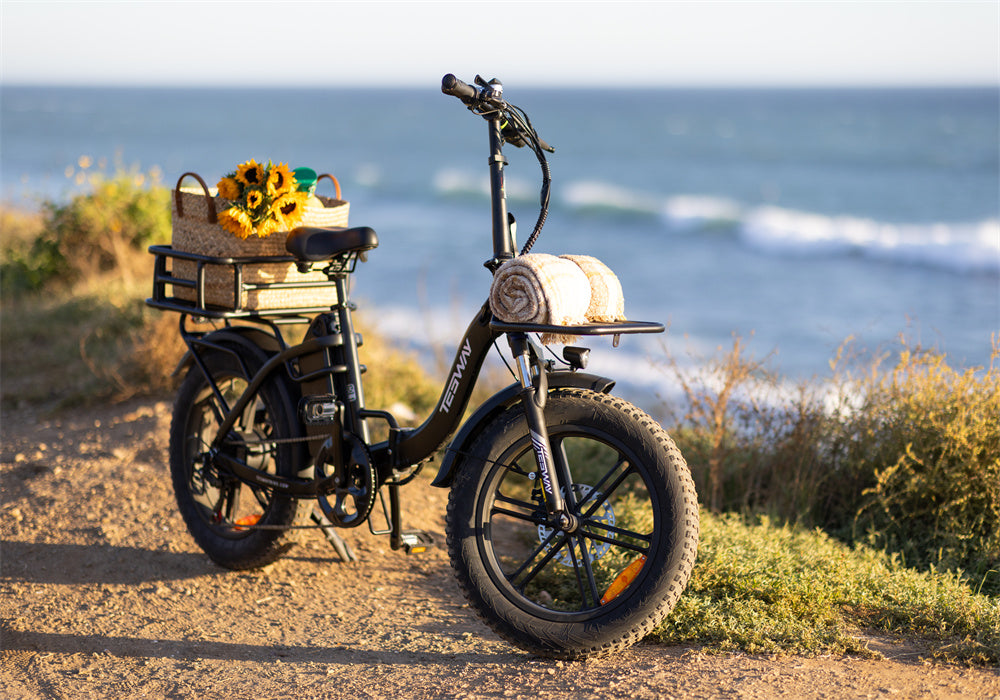Who Needs a Full Suspension Mountain Bike
You need a full suspension mountain bike if you frequently ride on rough, technical terrains. Full suspension bikes are specifically designed to handle challenging trails that include rocky descents, root-filled paths, and steep climbs.
These bikes provide both front and rear suspension, which absorbs shocks and bumps, offering a smoother and more controlled ride.
Riders who enjoy downhill biking or aggressive trail riding will significantly benefit from the enhanced comfort and performance of a full suspension mountain bike.
If you find yourself tackling trails with significant obstacles or enjoy pushing your limits on rugged paths, investing in a full suspension mountain bike is highly recommended.
Is It Better to Have Full Suspension on a Mountain Bike
Full suspension mountain bikes feature both front and rear suspension systems, while hardtail bikes only have front suspension. The full suspension system provides superior shock absorption, making it ideal for technical trails.
Riders experience less fatigue as the bike absorbs the impact from rough terrain, allowing them to maintain control and stability. This results in a more comfortable and enjoyable ride, especially on long and challenging trails.
On the other hand, hardtail bikes are lighter and more efficient for climbing and smoother trails, as they lack the additional weight and complexity of rear suspension.
The ability to navigate difficult terrain with ease makes full suspension bikes better suited for aggressive trail riding and downhill adventures. However, for those who prefer smoother trails or need a lighter bike for climbing, a hardtail might be more suitable.

What Are the Benefits and Disadvantages of a Full Suspension Mountain Bike
Benefits:
-
Enhanced Comfort: Full suspension mountain bikes provide superior comfort by absorbing shocks from rough terrain, reducing rider fatigue.
-
Improved Control: The suspension system offers better control and stability, especially on technical trails with rocks, roots, and drops.
-
Versatility: These bikes are versatile and can handle a wide range of terrains, from smooth paths to challenging trails.
-
Increased Speed: Riders can maintain higher speeds on downhill sections as the suspension absorbs impacts, allowing for faster and safer descents.
-
Better Traction: The suspension keeps the wheels in contact with the ground, improving traction and reducing the likelihood of slipping on loose or uneven surfaces.
Disadvantages:
-
Higher Cost: Full suspension bikes are generally more expensive than hardtails due to the additional components and technology involved.
-
Increased Weight: The added suspension components make these bikes heavier, which can be a disadvantage for climbing and long-distance rides.
-
Maintenance: Full suspension systems require more maintenance to keep them functioning optimally, adding to the overall cost and effort.
- Efficiency: Hardtail bikes are typically more efficient for pedaling on smooth trails and climbs, as they lack the energy loss associated with suspension movement.

Hardtail vs. Full Suspension Bikes: Which One Should You Choose
When deciding between hardtail and full suspension bikes, it's essential to consider the type of riding you do and your specific needs.
Hardtail Bikes:
-
Suitable for: Cross-country riders, those who ride on smoother trails, and riders who prioritize climbing efficiency and lighter weight.
-
Advantages: Hardtail bikes are lighter, more affordable, and require less maintenance. They are efficient for pedaling and climbing, making them ideal for long-distance rides and smoother trails.
-
Disadvantages: They lack the rear suspension, which means less comfort and control on rough and technical terrains.
Full Suspension Bikes:
-
Suitable for: Trail riders, downhill enthusiasts, and those who frequently ride on technical and rough terrains.
-
Advantages: Full suspension bikes provide superior comfort, control, and versatility. They are better suited for handling challenging trails with rocks, roots, and drops.
-
Disadvantages: They are heavier, more expensive, and require more maintenance compared to hardtail bikes.
If you enjoy aggressive trail riding and tackling technical terrains, a full suspension bike will offer the best performance and comfort. However, if you prefer smoother trails and prioritize climbing efficiency and lower weight, a hardtail bike might be the better option.
Final Thought
The decision between a hardtail and a full suspension mountain bike ultimately depends on your riding style and the type of terrain you prefer.
As someone who enjoys exploring mountainous trails and values the comfort and control offered by a full-suspension setup, the choice is clear.
Full suspension mountain bikes are ideal for tackling rugged, technical paths, providing the necessary shock absorption and stability to enhance your riding experience.
If, like me, you enjoy the thrill of mountain biking but prefer the assistance and versatility of electric mountain bikes (eMTBs), a full suspension eMTB offers the perfect combination of performance and convenience.
Those best ebike for money just at Tesway! Get yours now!
FAQs
What type of maintenance is required for full-suspension bikes?
Full-suspension bikes require regular maintenance of the suspension components, including checking for wear, cleaning, and lubricating moving parts.
Can I use a full-suspension bike for long-distance rides?
Yes, full-suspension bikes can be used for long-distance rides, but their added weight and complexity might make them less efficient than hardtails on smooth trails.
What should I consider when buying a full-suspension mountain bike?
Consider factors such as your riding style, the type of terrain you ride on, your budget, and the level of maintenance you are willing to perform.







Share:
We Tried Over 10 Electric Mountain Bikes. Here Are Our Top Picks for This Summer
We Have Tested Different Electric Mountain Bikes for Women – Here Are the Best